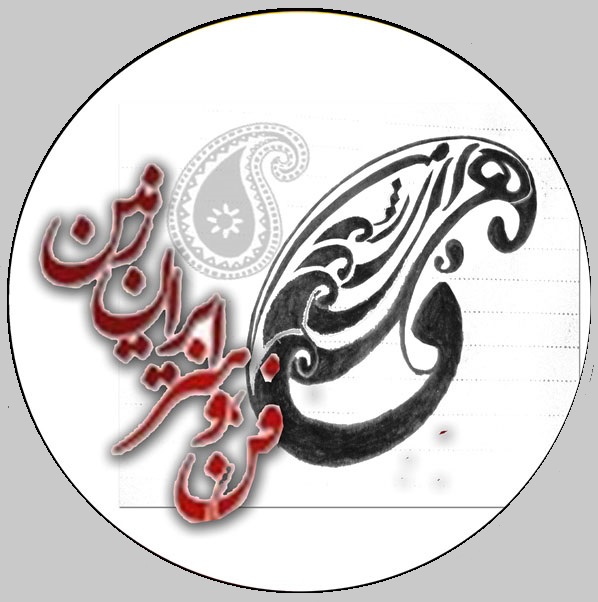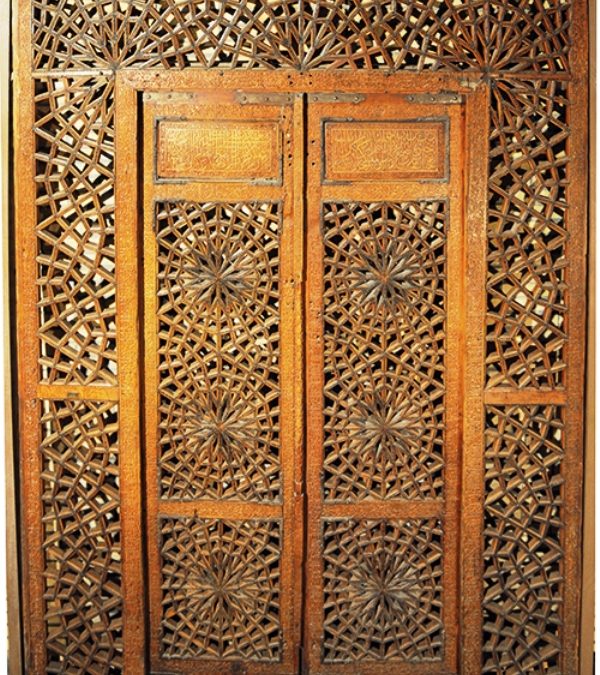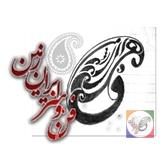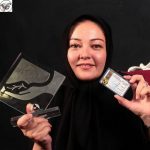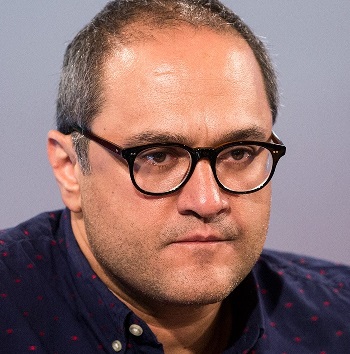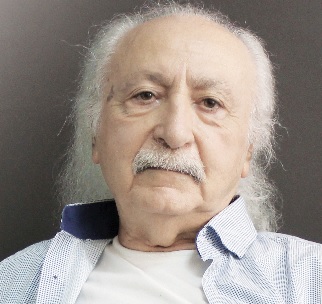ریاضیات اسلامی
برخی از نمونه های تقارن کامل، مورد استفاده در دکوراسیون مساجد اسلامی
امپراتوری اسلامی در سراسر ایران، شرق میانه، آسیای مرکزی، آفریقای شمالی، ایبریا و بخش هایی از هند از قرن 8 به بعد تاسیس سهم قابل توجهی را نسبت به ریاضیات ساخته شده است. آنها قادر به جلب و فیوز با هم تحولات ریاضی یونان andIndia بود.
یکی از پیامد های منع استفاده از تصویر صورت و رخ انسان باعث استفاده گسترده از الگوهای هندسی برای تزئین و هنر شد .
کاربرد ریاضیات به شکل یک هنر . در واقع، در طول زمان، هنرمندان مسلمان تمام انواع مختلف از تقارن و هندسه را به تصویر کشیدند .
قرآن خود را تشویق انباشت دانش و عصر طلایی علوم اسلامی و ریاضیات رونق در طول دوره قرون وسطی از 9 تا قرن 15. خانه حکمت در بغداد برپا شد در اطراف 810، و کار تقریبا بلافاصله در ترجمه بزرگ یونانی andIndian ریاضی آغاز شده و نجوم کار می کند به زبان عربی.
ریاضیدان برجسته فارسی محمد خوارزمی یک مدیر اولیه خانه حکمت در قرن 9 و یکی از بزرگترین ریاضیدانان مسلمان متقدم بود. شاید مهم ترین سهم خوارزمی در ریاضیات بود حمایت قوی خود را از سیستم عددی هندو (1 – 9 و 0)، که او به عنوان داشتن قدرت و کارایی مورد نیاز به انقلابی اسلامی (و بعدها غربی) ریاضیات، و که به رسمیت شناخته به زودی توسط کل جهان اسلام تصویب شد، و بعد از آن توسط اروپا و همچنین.
دیگر سهم مهم خوارزمی جبر بود، و او از روش های اساسی جبری “کاهش” و “تعادل” معرفی و ارائه یک حساب کاربری جامع از حل معادلات چند جمله ای تا درجه دوم. به این ترتیب، او در ایجاد قدرتمند زبان ریاضی انتزاعی هنوز هم در سراسر جهان استفاده می شود امروز، و اجازه یک راه بسیار کلی تر از تجزیه و تحلیل مشکلات دیگر از مشکلات خاص که قبلا توسط سرخپوستان و چینی در نظر گرفته.
قضیه دو جملهای
تاریخ 10th ریاضیدان قرن فارسی محمد ابوبکر کرجی کار به گسترش جبر هنوز هم بیشتر، آزاد کردن آن از میراث هندسی آن، و معرفی تئوری حساب جبری. ابوبکر کرجی برای اولین بار به استفاده از روش اثبات شده توسط استقراء ریاضی برای اثبات نتایج خود، با اثبات این است که دستور اول در دنباله نامتناهی از اظهارات درست است، و پس از آن اثبات این است که، اگر هر یک بیانیه در دنباله درست است بود، پس یک بعدی است.
در میان چیزهای دیگر، ابوبکر کرجی استفاده استقراء ریاضی برای اثبات این قضیه دو جمله ای. دوجمله ای را یک نوع ساده از عبارت جبری است که تنها دو دوره که در تنها با جمع، تفریق، ضرب و مثبت شارحان کل تعداد، مانند (x + y) اداره 2 است. همکاری efficients مورد نیاز در هنگام دوجمله ای گسترش یافته است به شکل یک مثلث متقارن، معمولا به عنوان مثلث پاسکال پس از قرن 17 ریاضیدان فرانسوی بلز پاسکال اشاره شده است، اگر چه بسیاری از ریاضیدانان دیگر آن قرنها قبل از او در هند، ایران، چین و ایتالیا تحصیل کرده بود، از جمله ابوبکر کرجی.
چند صد سال پس از ابوبکر کرجی، عمر خیام تعمیم روش هند برای استخراج ریشه های مربع و مکعب شامل چهارم (شاید بهتر به عنوان یک شاعر و نویسنده از “رباعیات خیام”، اما ریاضیدان مهم و ستاره شناس در سمت راست خود شناخته می شود)، ریشه پنجم و بالاتر در قرن 12th در اوایل. او انجام یک تجزیه و تحلیل سیستماتیک از مشکلات مکعب، آشکار شد در واقع چند نوع متفاوت از معادلات مکعب وجود دارد. اگر چه او در واقع موفقیت در حل معادله مکعب، و اگر چه او است که معمولا با شناسایی پایه های هندسه جبری اعتبار، او از پیشرفت های بیشتر توسط ناتوانی خود را برای جدا کردن جبر از هندسه، و یک روش کاملا جبری برای برگزار شد حل معادلات مکعب تا به حال به 500 سال دیگر صبر کنید و ایتالیایی ریاضیدانان دل فرو و تارتالیا.
طوسی یکی از پیشگامان در زمینه مثلثات کروی بود
در 13th قرن فارسی ستاره شناس، دانشمند و ریاضیدان خواجه نصیرالدین طوسی شاید اولین برای درمان مثلثات به عنوان رشته ریاضی جدا از ستاره شناسی بود. ساخت و ساز در اوایل کار byGreek ریاضیدانان مانند منلائوس اسکندریه و کار هند در تابع مثلثاتی، او اولین نمایشگاه گسترده ای از مثلثات کروی، از جمله فهرست شش موارد متفاوت یک مثلث راست در مثلثات کروی. یکی از کمک های ریاضی خود را بزرگ تدوین قانون معروف سینوس برای مثلث هواپیما، a/ (SIN A) = b/ (sinB) = c/ (SIN C) بود، اگر چه قانون ناگزیر برای مثلث کروی قبل از آن کشف شده بود توسط 10 قرن ایرانیان ابوالقاسم وفا Buzjani و ابو نصر منصور.
دیگر ریاضیدانان مسلمان قرون وسطی ارزش توجه داشته باشید عبارتند از:
9 قرن عرب ثابت بن قره، که یک فرمول کلی است که توسط آن اعداد دوست داشتنی می تواند مشتق شده توسعه یافته، دوباره کشف خیلی بعد توسط هر دو فرما و دکارت (اعداد دوست داشتنی جفت از اعداد که مجموع مقسوم علیه های یک عدد برابر با می تعداد دیگر، به عنوان مثال مقسوم علیههای ان مناسب از 220 1، 2، 4، 5، 10، 11، 20، 22، 44، 55 و 110، که از مجموع 284؛ و مقسوم علیههای ان مناسب از 284 1، 2، 4، 71، و 142، که از مجموع 220 است).
قرن 10 ریاضیدان عرب ابوالقاسم حسن Uqlidisi، که اولین متن بازمانده نشان دادن استفاده موضعی از اعداد عربی، و به خصوص استفاده از اعشار به جای کسری (به عنوان مثال 7.375 INSEAD از 73/8) نوشت؛
تاریخ 10th هندسه دان عرب قرن ابراهیم بن سنان، که تحقیقات ارشمیدس از مساحت و حجم و همچنین در مماس از یک دایره ادامه داد:
در 11th قرن فارسی ابن هیثم (همچنین به عنوان ابن هیثم شناخته می شود)، که در علاوه بر این به کار پیشگامانه خود را در اپتیک و فیزیک، تاسیس آغاز ارتباط بین جبر و هندسه، و ابداع آنچه در حال حاضر به عنوان “مشکل ابن هیثم” شناخته شده (او اولین ریاضیدان به دست آوردن فرمول برای مجموع قدرت چهارم، با استفاده از یک روش این است که به آسانی قابل تعمیم)؛ و
در 13th قرن فارسی کمالالدین فارسی، که نظریه بخش های مخروطی برای حل مشکلات نوری، و همچنین به دنبال کار در تئوری اعداد مانند روی اعداد دوست داشتنی، فاکتور و روش ترکیبی؛
در 13th قرن مراکش ابن البنا AL-Marrakushi، که آثار شامل موضوعاتی مانند محاسبه جذر و تئوری کسور ادامه داد، و همچنین به عنوان کشف اولین جفت جدید از اعداد دوست داشتنی از زمان های قدیم (17،296 و 18،416، بعد دوباره کشف توسط فرما) و از اولین استفاده از نماد جبری از براهماگوپتا.
با نفوذ خفقان آور ترکیه امپراتوری عثمانی از قرن 14th و یا 15 به بعد، ریاضیات اسلامی دچار رکود و پیشرفت های بیشتر به اروپا نقل مکان کرد.
منبع : storyofmathematics.com
ISLAMIC MATHEMATICS
| Some examples of the complex symmetries used in Islamic temple decoration |
The Islamic Empire established across Persia, the Middle East, Central Asia, North Africa, Iberia and parts of India from the 8th Century onwards made significant contributions towards mathematics. They were able to draw on and fuse together the mathematical developments of both Greece andIndia.
One consequence of the Islamic prohibition on depicting the human form was the extensive use of complex geometric patterns to decorate their buildings, raising mathematics to the form of an art. In fact, over time, Muslim artists discovered all the different forms of symmetry that can be depicted on a 2-dimensional surface.
The Qu’ran itself encouraged the accumulation of knowledge, and a Golden Age of Islamic science and mathematics flourished throughout the medieval period from the 9th to 15th Centuries. The House of Wisdom was set up in Baghdad around 810, and work started almost immediately on translating the major Greek andIndian mathematical and astronomy works into Arabic.
The outstanding Persian mathematician Muhammad Al-Khwarizmi was an early Director of the House of Wisdom in the 9th Century, and one of the greatest of early Muslim mathematicians. Perhaps Al-Khwarizmi’s most important contribution to mathematics was his strong advocacy of the Hindu numerical system (1 – 9 and 0), which he recognized as having the power and efficiency needed to revolutionize Islamic (and, later, Western) mathematics, and which was soon adopted by the entire Islamic world, and later by Europe as well.
Al-Khwarizmi’s other important contribution was algebra, and he introduced the fundamental algebraic methods of “reduction” and “balancing” and provided an exhaustive account of solving polynomial equations up to the second degree. In this way, he helped create the powerful abstract mathematical language still used across the world today, and allowed a much more general way of analyzing problems other than just the specific problems previously considered by the Indians and Chinese.
Binomial Theorem |
The 10th Century Persian mathematician Muhammad Al-Karaji worked to extend algebra still further, freeing it from its geometrical heritage, and introduced the theory of algebraic calculus. Al-Karaji was the first to use the method of proof by mathematical induction to prove his results, by proving that the first statement in an infinite sequence of statements is true, and then proving that, if any one statement in the sequence is true, then so is the next one.
Among other things, Al-Karaji used mathematical induction to prove the binomial theorem. A binomial is a simple type of algebraic expression which has just two terms which are operated on only by addition, subtraction, multiplication and positive whole-number exponents, such as (x +y)2. The co-efficients needed when a binomial is expanded form a symmetrical triangle, usually referred to as Pascal’s Triangle after the 17th Century French mathematician Blaise Pascal, although many other mathematicians had studied it centuries before him in India, Persia, China and Italy, including Al-Karaji.
Some hundred years after Al-Karaji, Omar Khayyam (perhaps better known as a poet and the writer of the “Rubaiyat”, but an important mathematician and astronomer in his own right) generalized Indian methods for extracting square and cube roots to include fourth, fifth and higher roots in the early 12th Century. He carried out a systematic analysis of cubic problems, revealing there were actually several different sorts of cubic equations. Although he did in fact succeed in solving cubic equations, and although he is usually credited with identifying the foundations of algebraic geometry, he was held back from further advances by his inability to separate the algebra from the geometry, and a purely algebraic method for the solution of cubic equations had to wait another 500 years and the Italian mathematicians del Ferro and Tartaglia.
Al-Tusi was a pioneer in the field of spherical trigonometry |
The 13th Century Persian astronomer, scientist and mathematician Nasir Al-Din Al-Tusi was perhaps the first to treat trigonometry as a separate mathematical discipline, distinct from astronomy. Building on earlier work byGreek mathematicians such as Menelaus of Alexandria and Indian work on the sine function, he gave the first extensive exposition of spherical trigonometry, including listing the six distinct cases of a right triangle in spherical trigonometry. One of his major mathematical contributions was the formulation of the famous law of sines for plane triangles, a⁄(sin A) = b⁄(sinB) = c⁄(sin C), although the sine law for spherical triangles had been discovered earlier by the 10th Century Persians Abul Wafa Buzjani and Abu Nasr Mansur.
Other medieval Muslim mathematicians worthy of note include:
- the 9th Century Arab Thabit ibn Qurra, who developed a general formula by which amicable numbers could be derived, re-discovered much later by both Fermat and Descartes(amicable numbers are pairs of numbers for which the sum of the divisors of one number equals the other number, e.g. the proper divisors of 220 are 1, 2, 4, 5, 10, 11, 20, 22, 44, 55 and 110, of which the sum is 284; and the proper divisors of 284 are 1, 2, 4, 71, and 142, of which the sum is 220);
- the 10th Century Arab mathematician Abul Hasan al-Uqlidisi, who wrote the earliest surviving text showing the positional use of Arabic numerals, and particularly the use of decimals instead of fractions (e.g. 7.375 insead of 73⁄8);
- the 10th Century Arab geometer Ibrahim ibn Sinan, who continued Archimedes’ investigations of areas and volumes, as well as on tangents of a circle;
- the 11th Century Persian Ibn al-Haytham (also known as Alhazen), who, in addition to his groundbreaking work on optics and physics, established the beginnings of the link between algebra and geometry, and devised what is now known as “Alhazen’s problem” (he was the first mathematician to derive the formula for the sum of the fourth powers, using a method that is readily generalizable); and
- the 13th Century Persian Kamal al-Din al-Farisi, who applied the theory of conic sections to solve optical problems, as well as pursuing work in number theory such as on amicable numbers, factorization and combinatorial methods;
- the 13th Century Moroccan Ibn al-Banna al-Marrakushi, whose works included topics such as computing square roots and the theory of continued fractions, as well as the discovery of the first new pair of amicable numbers since ancient times (17,296 and 18,416, later re-discovered by Fermat) and the the first use of algebraic notation since Brahmagupta.
With the stifling influence of the Turkish Ottoman Empire from the 14th or 15th Century onwards, Islamic mathematics stagnated, and further developments moved to Europe.
